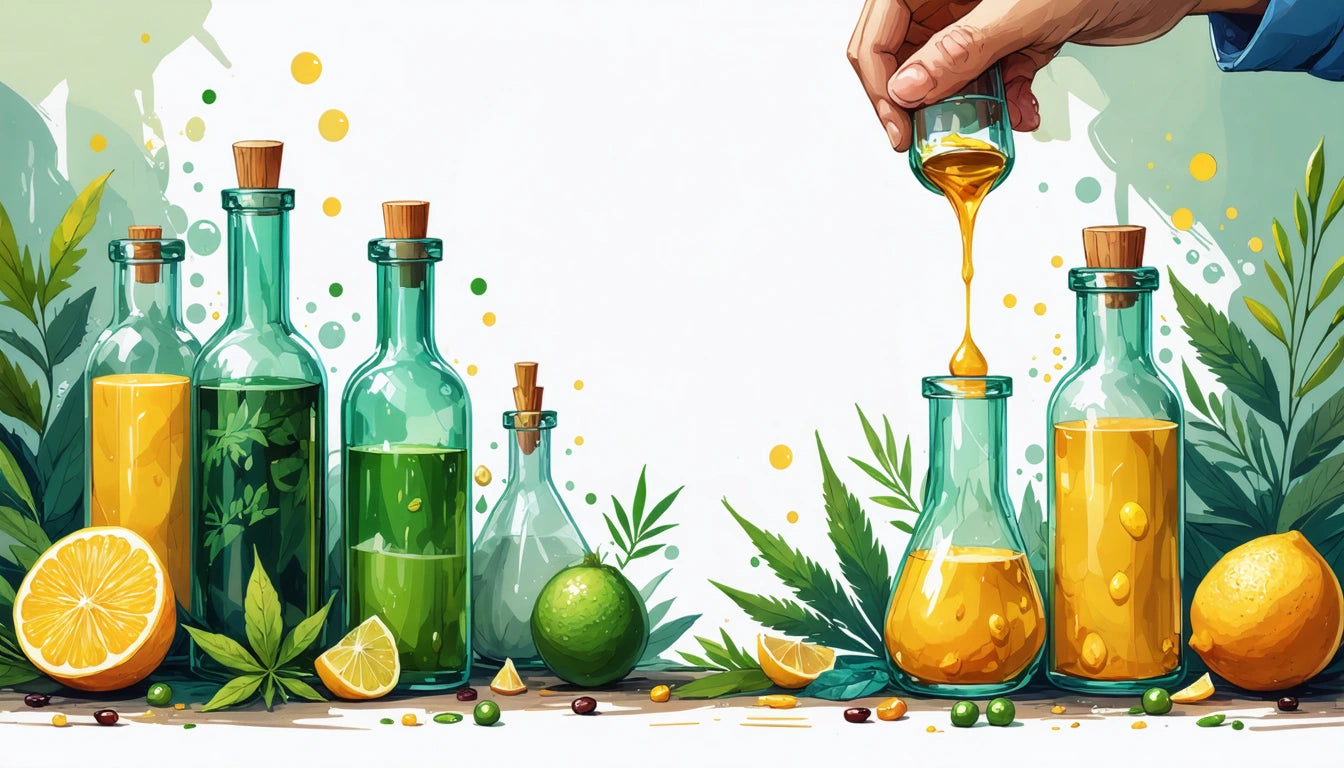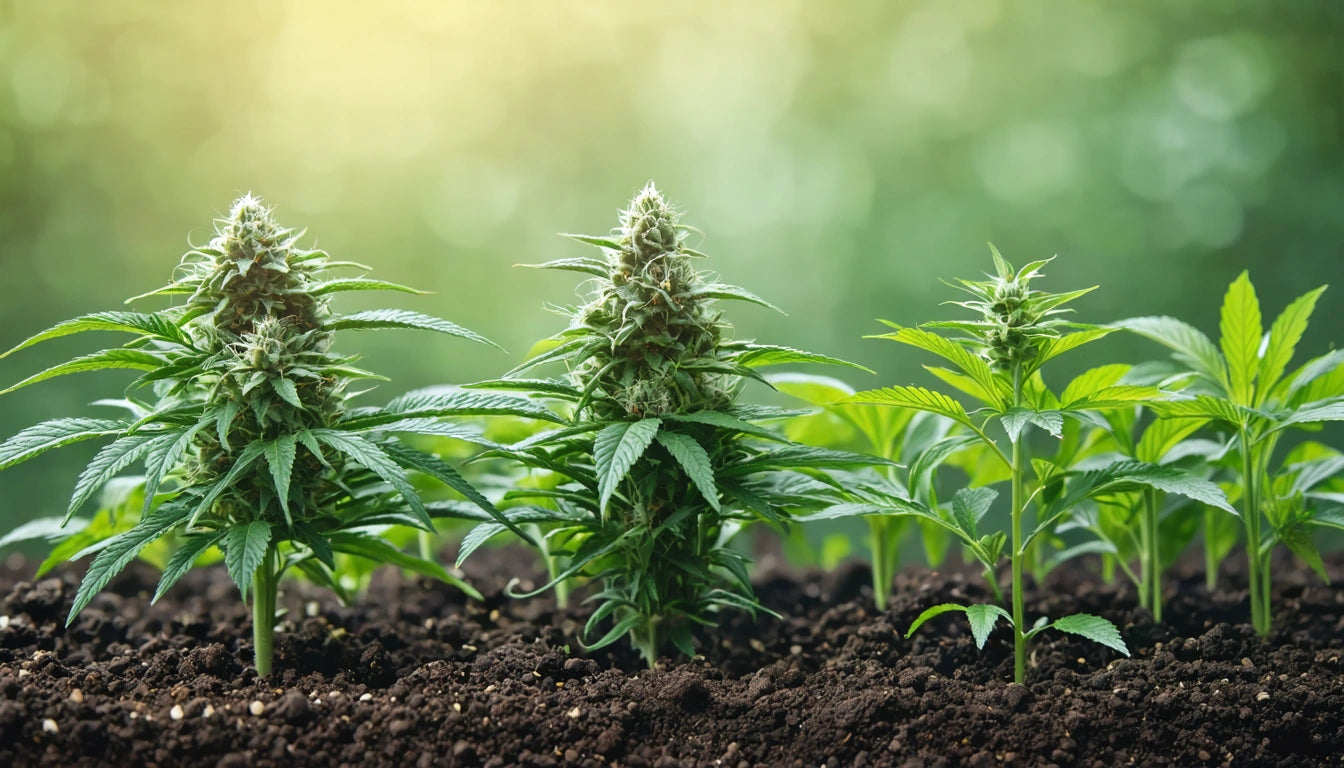Table of Contents
How Dabs Are Made: Ingredients, Process, and History
Cannabis concentrates, commonly known as dabs, have revolutionized consumption methods in recent years. These potent extracts contain highly concentrated cannabinoids and terpenes derived from the cannabis plant. Understanding how dabs are made provides insight into their potency, quality, and safety considerations for consumers.
What Are Dabs: Composition and Ingredients
Dabs are cannabis concentrates made primarily from the trichomes of the cannabis plant. These crystal-like structures contain the highest concentrations of cannabinoids (THC, CBD) and terpenes. What are dabs made of? The base material is typically cannabis flower, though trim, shake, and even whole plants can be used depending on the desired quality and production scale.
The main components of dabs include:
- Cannabinoids (primarily THC in recreational products)
- Terpenes (aromatic compounds providing flavor and effects)
- Plant waxes and lipids (in varying amounts depending on extraction method)
The purity and composition vary significantly based on the starting material and extraction process used. High-quality dabs typically come from premium flower material with minimal plant matter and contaminants.
Extraction Methods: How Dabs Are Made
The production of dabs involves extracting the desirable compounds from cannabis plant material. These methods fall into two main categories: solvent-based and solventless extractions.
Solvent-Based Extractions
Solvent-based methods use chemical solvents to strip cannabinoids and terpenes from plant material. These methods require specialized equipment and expertise to perform safely.
- Butane Hash Oil (BHO): The most common method for how dabs are made commercially. Liquid butane passes through cannabis material, dissolving the trichomes. The solution is then purged of solvent using heat and vacuum. This creates products like shatter, wax, budder, and crumble.
- CO2 Extraction: Uses pressurized carbon dioxide to pull cannabinoids from plant material. This method produces cleaner extracts with no toxic residual solvents.
- Ethanol Extraction: Employs high-proof alcohol to extract compounds, followed by evaporation. This method often extracts more chlorophyll and plant compounds.
According to our guide on understanding dabs, solvent-based extractions can yield concentrates with THC levels between 60-90%, significantly higher than traditional cannabis flower.
Solventless Extractions
Solventless methods use mechanical or physical means to separate trichomes without chemical solvents.
- Rosin: Created by applying heat and pressure to cannabis flower or hash, forcing resinous sap out. This is the safest method for home production.
- Ice Water Hash/Bubble Hash: Uses ice water agitation to separate trichomes, which are then filtered through progressively finer mesh screens.
- Dry Sift: Involves sieving dried cannabis through fine mesh screens to collect trichomes.
Many consumers prefer solventless extracts due to their purity and natural production methods. For those interested in pre-rolled options that incorporate concentrates, specialized infused cones for pre-rolls offer a convenient alternative to traditional dabbing setups.
Historical Development of Cannabis Concentrates
When was the dab made? While concentrated cannabis extracts have existed for centuries in forms like hashish, modern dabbing emerged in the early 2000s. The timeline of development includes:
- Pre-2000s: Traditional hash production methods existed for centuries, particularly in regions like Morocco, Afghanistan, and Lebanon.
- Early 2000s: Rudimentary BHO techniques began appearing in cannabis communities.
- 2010-2015: Refinement of extraction techniques, development of closed-loop systems, and the emergence of commercial production.
- 2015-Present: Technological advancements, regulation development, and mainstream acceptance of concentrates in legal markets.
The evolution of extraction technology has dramatically improved both the safety and quality of concentrates available today, as detailed in this beginner's guide to dabs.
Appearance and Types of Dabs
What do dabs look like? The appearance varies significantly based on extraction method, processing techniques, and starting material:
- Shatter: Glass-like, transparent, amber-colored sheets that break easily
- Wax/Budder: Opaque, soft, butter-like consistency
- Crumble: Dry, crumbly texture similar to feta cheese
- Live Resin: Sticky, granular consistency with high terpene content
- Diamonds: Crystalline THCA formations suspended in terpene sauce
Each type offers different experiences in terms of flavor, potency, and ease of use. For a visual guide to different forms and quantities, this resource on dab appearances provides helpful comparisons.
Consumption Methods and Safety Considerations
Can you dab resin? While cannabis resin can technically be dabbed, it's generally not recommended due to its high plant matter content and harsh smoke. Purpose-made extracts provide a cleaner, more enjoyable experience.
Safe consumption practices include:
- Using proper equipment (dab rig, e-nail, or vaporizer designed for concentrates)
- Temperature control (low-temp dabbing preserves terpenes and reduces harshness)
- Starting with small amounts, especially for beginners
- Purchasing from reputable, licensed producers
- Avoiding homemade extracts of uncertain quality
According to our safety guide for dabs, proper education about consumption methods significantly reduces health risks associated with concentrate use.
For consumers interested in trying concentrates without specialized equipment, infused products like pre-rolls with concentrates offer an accessible entry point. These products combine traditional flower with concentrates for enhanced potency.
Understanding what dabs are made from and how they're produced helps consumers make informed choices about product quality, safety, and the experience they can expect. As extraction technology continues to evolve, we can anticipate even cleaner, more refined products entering the market in coming years.











Leave a comment
All comments are moderated before being published.
This site is protected by hCaptcha and the hCaptcha Privacy Policy and Terms of Service apply.